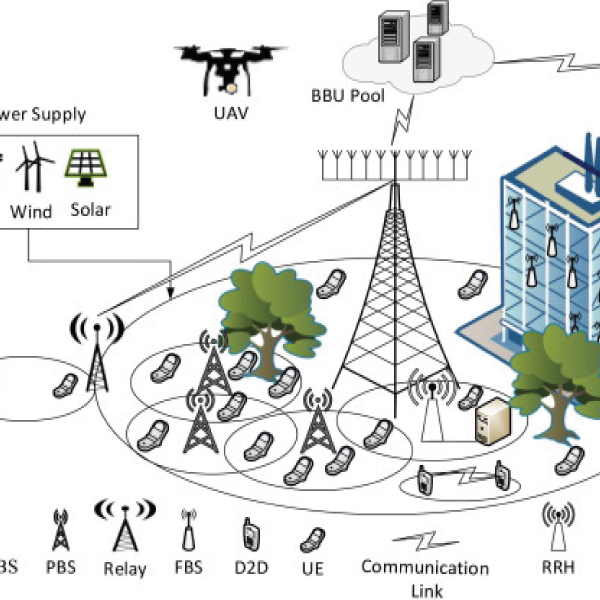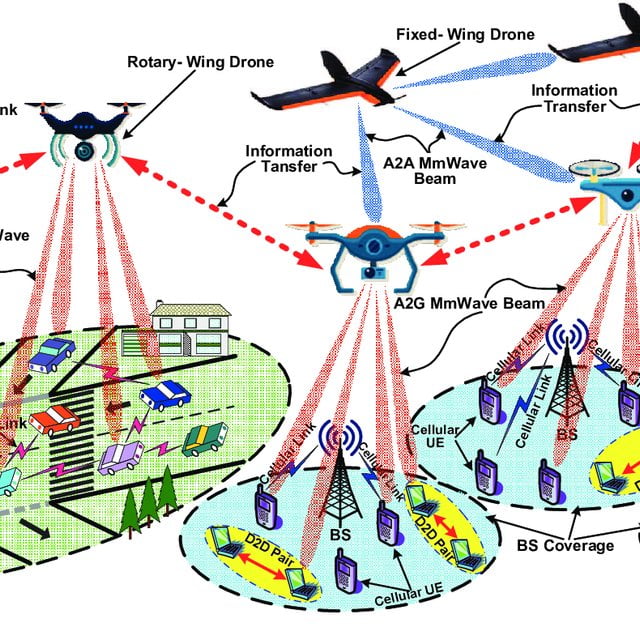Description
Multiagent Autonomous Learning For Distributed Channel Allocation In Wireless Network
ABSTRACT
Multi-Carrier Modulation (MCM) is a popular and efficient air interface technique, where the available channel bandwidth is subdivided into several parallel sub-bands or sub-channels. Each sub-band has its own associated carrier. The most popular Orthogonal Frequency Division Multiplexing (OFDM) technique, the core modulation technique of 4G, is not efficient in 5G New Radio (NR) waveforms. As an alternative, different MCM techniques are now under research phases. In this paper we have discussed two modulation techniques for 5G communications, one is Filter Bank Multi-carrier (FBMC) and the second one is Universal Filtered Multi-carrier (UFMC). Discussions of other MCM systems are outside the scope of this work. It was found that the Binomial Filter-based FBMC can reduce the PAPR when the simulation results were compared with another popular Prototype Filter. PAPR reduction was about 0.81 dB in the case of Binomial Filter-based FBMC and at the 256-QAM level. In the second case, sub-band interference of FPBF based UFMC was about 58 dB less than that of 60 dB Dolph-Chebyshev Filter-based UFMC. PAPR was also minimum in the case of FPBF based UFMC. Multiagent Autonomous Learning For Distributed Channel Allocation In Wireless Network
Multiagent Autonomous Learning For Distributed Channel Allocation In Wireless Network
INTRODUCTION
Increased demand for Gbps data rate, incorporation of more applications and users, a new 5G radio propagation technique has been discussed and researched seriously for future wireless networks. Present LTE-A and Wi-Fi technologies will be merged with the 5G technologies for universal coverage, providing higher data rates and better user experiences. There are some restrictions of current LTE-A such as:? 1. Simultaneous requirements of various distinct facilities for an increased number of users,? 2. Insufficient bandwidth for allocating channels to customers,? 3. The huge population within a chain of high-rise buildings, and 4. Increased power requirements for a huge number of mobile phones and other wireless devices. 5G communication services will have the facilities of higher Quality of Service (QoS) at greater ranges for massive Machine Type Communications (MTC), Internet of Things (IoT), and other Ultra-Reliable and Low Latency Communications (LLC). 5G systems will have a data rate at least ten times higher than that of 4G. Multiagent Autonomous Learning For Distributed Channel Allocation In Wireless Network
EXISTING SYSTEM AND DISADVANTAGES
- As the multiple numbers of synchronized subcarriers are added in OFDM using Inverse Fast Fourier Transform (IFFT), it leads to a high Peak to Average Power Ratio (PAPR) [4]. This high PAPR problem makes the implementation of OFDM very difficult.
- Some of the techniques are clipping and filtering, tone injection, coding, tone reservation, interleaving, companding, Selected Level Mapping (SLM), and Partial Transmit Sequence (PTS) [6]. Clipping causes In-Band and Out-of-Band Interference (IBI/OBI) due to its nonlinearity [4]. Companding is a better technique for mitigating the OBI and also it reduces the PAPR. But the Bit Error Rate (BER) performance of companding is poor.
PROPOSED SYSTEM
In this paper, we have discussed two different Prototype Filters for FBMC and UFMC systems. We have introduced a Binomial Filter as the Prototype Filter for FBMC and a Fractional Powered Binomial Filter (FPBF) as the Prototype Filter for UFMC.
ADVANTAGES
The advantages of FMC systems are robustness against multiple-user interferences, higher spectral efficiency, lower latency, and better performance over OFDM.
APPLICATIONS
5G communication services will have the facilities of higher Quality of Service (QoS) at greater ranges for massive Machine Type Communications (MTC), Internet of Things (IoT), and other Ultra-Reliable. Increased demand for Gbps data rate, incorporation of more applications and users, a new 5G radio propagation technique has been discussed and researched seriously for future wireless networks.
PROJECT DESCRIPTION
UFMC based techniques, the whole frequency band is decomposed into several sub-bands and each sub-band is composed of a number of sub-carriers. Filtering is applied to each sub-band of UFMC. Sub-band based Filtering of UFMC can relax the requirements of global synchronization which in turn supports the inter-subband asynchronous transmission
SOFTWARE REQUIRED
MATLAB 2018 and above
CONCLUSION
This paper describes the incorporation of two different Prototype Filters based Multi-Carrier Modulation (MCM) systems. One of them is the FBMC based on Binomial Filter. It was observed through simulations that the Binomial Prototype Filter performs better than the other Prototype Filter. Reduction of PAPR is better in the case of Binomial Filter with a higher order of modulation (at 256 QAM).
REFERENCE
[1] R. Van Nee and R. Prasad, OFDM for Wireless Multimedia Communications. London, UK: Artech House, 2000.
[2] Ronald Nissel, Stefan Schwarz, and Markus Rupp, ?Filter Bank Multicarrier Modulation Schemes for future Mobile Communications?, IEEE Journal on Selected Areas in Communications, Vol. 35, No. 8, August 2017, pp. 1768-1782.
[3] Behrouz Frhang-Boroujeny,? OFDM Versus Filter Bank Multicarrier?, IEEE Signal Processing Magazine, May 2011, pp. 92-112.
[4] R.N. Mitra, D.P. Agrawal, ?5G mobile technology: A survey?? ICT Express 1, 2015, pp. 132-137 [http://dx.doi.org/10.1016/j.icte.2016.01.003]
[5] Schaich F, Wild T. “Waveform contenders for 5G-OFDM vs. FBMC vs.UFMC,” Proc. ISCCSP?14, 2014, pp.457?460.
[6] Vakilian V, Wild T, Schaich F, Brink S T. “Universal-Filtered multicarrier technique for wireless systems beyond LTE,” Proc. Globecom Workshops 2013, 2013, pp. 223? 228.
[7] Xi Zhang et al.,?Filtered-OFDM- Enabler for Flexible Waveform in The 5th Generation Cellular Networks?, IEEE Global Communication Conference (GLOBECOM), San Diego, CA, pp. 1-6, Dec. 2015.
[8] S. Mirabbasi and K. Martin, ?Overlapped complex-modulated transmultiplexer Filters with simplified design and superior stopbands,? IEEE Trans. Circuits Syst. II, vol. 50, pp. 456? 469, Aug. 2003.
[9] P. Martin et al.,?A generalized window approach for designing transmultiplexers?, IEEE Trans. Circuits Syst. I, vol. 55, pp. 2696?2706, Oct. 2008.
[10] M. Bellanger,?FBMC physical layer: a primer,? Tech. Rep. 06/2010, 2010.



































































































































































































































































































































































































































































































































































































































































































































































































































































































































































































































































Customer Reviews
There are no reviews yet.